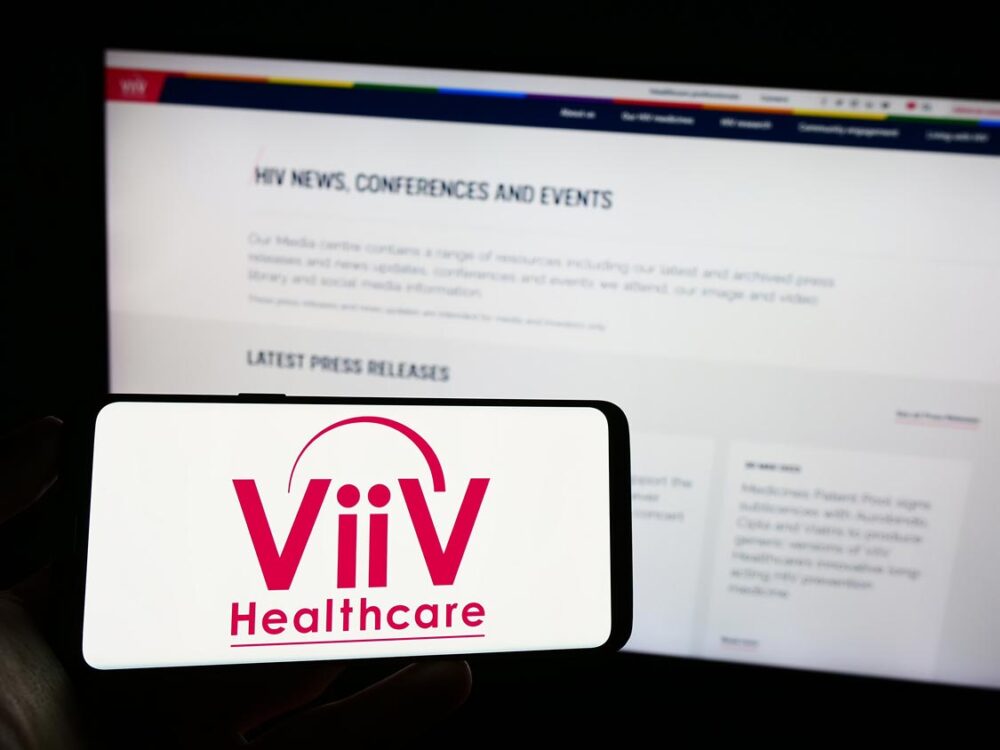Advertisment
Phase IV data demonstrates Dovato (DTG/3TC) is highly effective in treatment naive people with advanced HIV – Viiv Healthcare

ViiV Healthcare, the global specialist HIV company majority owned by GSK, with Pfizer and Shionogi as shareholders announced 48-week findings from the DOLCE study, sponsored by Fundación Huésped and the Bahiana Foundation of Infectiology, showing the 2-drug regimen Dovato (dolutegravir/lamivudine [DTG/3TC]) achieved similar results to 3-drug therapy in viral suppression in a population of adults with advanced HIV. A post-hoc analysis of the study showed DTG/3TC was non-inferior to 3-drug therapy regardless of the participant’s baseline viral load. These data were presented at HIV Glasgow 2024, being held in Glasgow, Scotland from 10 – 13 November.
Harmony P. Garges, M.D., Chief Medical Officer, at ViiV Healthcare, said: “We know taking fewer medicines is an important consideration for many in the HIV community, and these new data continue to reinforce the efficacy and safety of Dovato, a 2-drug regimen. The findings from the DOLCE study build on the robust body of evidence supporting its use in treatment-naive adults living with HIV and shows comparable efficacy to a 3-drug regimen, even in people with low CD4 counts and high viral loads.”
DOLCE is a randomised, open-label, multicentre study assessing the efficacy and safety of DTG/3TC in 230 antiretroviral treatment (ART)-naïve people with advanced HIV (low CD4 counts [≤200 cells/mL]). In the clinical trial, participants were randomised in a 2:1 ratio to receive DTG/3TC (n=152) or DTG+TDF/XTC (n=77). The baseline characteristics of the participants were similar between the two treatment groups and represented a population of people with severe immunosuppression – 43% of participants having baseline CD4 counts less than 100 cells/mL, 69% having baseline viral load (VL) greater than 100,000 copies (c)/mL, and 23% having a very high baseline VL, greater than 500,000 copies (c)/mL.
The primary endpoint of the study was the proportion of subjects with VL <50 copies/ml at week 48. At week 48 comparable efficacy was observed, with 82% of individuals in the DTG/3TC group and 80% in the 3-drug regimen group achieving a VL<50. Furthermore, a post-hoc analysis showed that Dovato was non-inferior to the 3-drug regimen in achieving a VL<50.
Prof. Pedro Cahn, Scientific Director of Fundación Huésped study investigator of the DOLCE study, said: “It’s encouraging to see additional new data that continue to support the efficacy and safety of 2-drug regimens compared to traditional 3-drug regimens. The results from DOLCE provide healthcare providers with further confidence in prescribing DTG/3TC and are important findings for people living with HIV taking medicines to suppress their virus.”
A post-hoc analysis reported that DTG/3TC was non-inferior to 3-drug therapy (adjusted risk difference of 2.0%, 95% CI -8.6; 12.8%). The study also showed that secondary efficacy measures of viral load decline, time to viral suppression, and CD4 recovery were similar between arms. Efficacy by baseline viral load categories was similar across both arms, including those with baseline viral load greater than 500,000 copies with 74% in the DTG/3TC arm, and 67% in the DTG+TDF/XTC arm achieving virologic success. The change in median CD4 count from baseline to Week 48 showed an increase of 200 cells/mL in the DTG/3TC arm and an increase of 177 cells/mL in the triple therapy arm.
Safety through Week 48 was comparable across both arms and consistent with known safety profiles and showed similar rates of serious adverse events (SAEs) and immune reconstitution inflammatory syndrome across arms. The rate of discontinuation in both arms was also similar (DTG/3TC = 12,8%; DTG+TDF/XTC = 6,8%).
About DOLCE;The DOLCE (NCT04880395) randomised clinical trial is a phase IV, open-label, multicentre clinical trial assessing the efficacy of DTG/3TC for the treatment of HIV-1 in treatment-naïve adults 18 years or older with CD4+ T-cell count ≤200 c/mm3 and HIV-1 RNA >1,000 copies/mL with no known ART-resistance or HBV co-infection, conducted in 11 sites across Argentina and Brazil. The primary endpoint was the proportion of participants with plasma HIV-1 RNA <50 c/mL at Week 48 (FDA snapshot for ITT-E population) and secondary outcomes included, among others, efficacy, resistance, safety, and tolerability.





